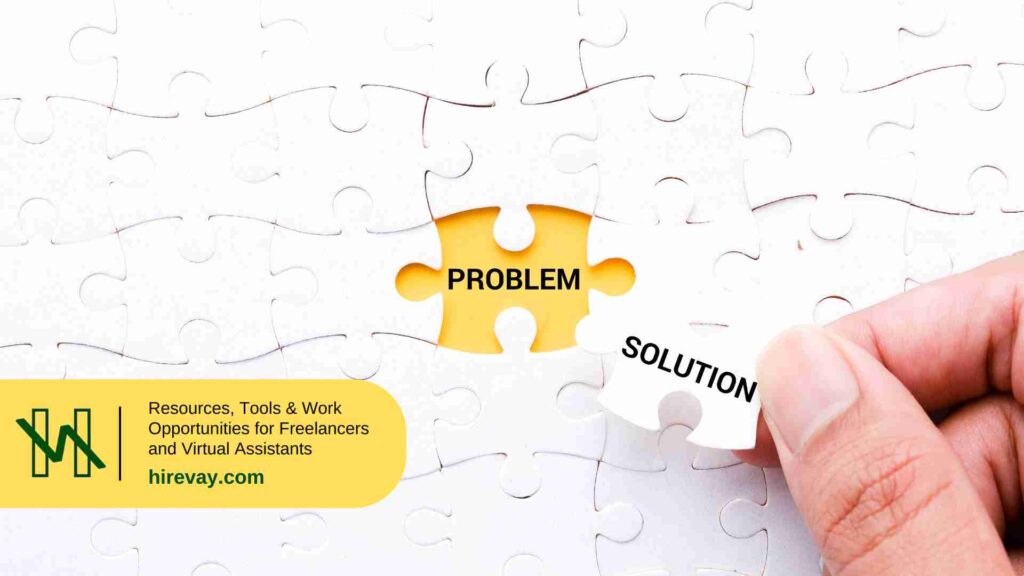Table of Contents

Introduction to HR Virtual Assistants
Definition and Basic Concept of HR Virtual Assistants
Human Resources (HR) Virtual Assistants are AI-powered digital tools designed to streamline and automate various HR functions. These assistants leverage technologies such as Natural Language Processing (NLP) and Machine Learning (ML) to perform tasks that traditionally required human intervention. They engage with employees and candidates through chatbots, handle routine inquiries, schedule interviews, and manage other administrative tasks. Essentially, HR Virtual Assistants are transforming the way HR departments operate by automating processes, reducing workload, and improving efficiency.
Evolution of HR Automation and Digital Transformation
The journey towards HR automation started with the digitization of simple administrative tasks, such as managing employee records and payroll processing. Over time, the introduction of more sophisticated software and systems paved the way for the digital transformation of HR. The advent of cloud computing further accelerated this change, allowing organizations to store and analyze vast amounts of data securely and efficiently. The latest wave in this evolution is the integration of AI and ML, bringing about intelligent automation solutions like HR Virtual Assistants. These advancements have not only redefined how HR tasks are performed but also how strategic HR can become within an organization.
Importance of Virtual Assistants in Modern HR Operations
HR departments today face the dual challenge of managing routine tasks and contributing to strategic initiatives. This is where HR Virtual Assistants come into play. By automating repetitive and time-consuming tasks, these digital tools free up HR professionals to focus on more impactful activities, such as talent management, employee engagement, and organizational development.
HR Virtual Assistants also enhance the employee experience by providing instant responses and support, ensuring that employee queries are handled promptly. This immediacy is crucial in a fast-paced work environment where time is of the essence. Additionally, the data these assistants collect can provide valuable insights into employee behavior and trends, aiding in better decision-making and policy formulation.
With the growing emphasis on efficiency, scalability, and employee satisfaction, HR Virtual Assistants are becoming indispensable in modern HR operations. Embracing these tools can lead to significant improvements not only in operational aspects but also in the overall strategic contribution of the HR function within an organization.
Transitioning from an understanding of the basic concepts and significance of HR Virtual Assistants, we will now delve into their key features and capabilities.

Key Features and Capabilities
Core Functionalities of HR Virtual Assistants
HR Virtual Assistants bring several core functionalities to the table, redefining how HR departments operate. These virtual assistants offer:
- Automation of Routine Tasks: They can handle repetitive tasks such as scheduling interviews, managing leave requests, and sending reminders. This frees up HR professionals to focus on more strategic aspects of their roles.
- Employee Management: From onboarding to offboarding, HR Virtual Assistants streamline processes. They can automate the creation of employee profiles, manage documentation, and support training programs.
- Query Resolution: These assistants are available 24/7 to answer common HR questions, providing instant support to employees and reducing the workload on HR teams.
- Performance Analysis: They help analyze employee performance data, provide insights into productivity trends, and suggest areas for improvement.
AI and Machine Learning Integration in HR Processes
Integrating Artificial Intelligence (AI) and Machine Learning (ML) into HR Virtual Assistants has significantly enhanced their capabilities. Here’s how:
- Predictive Analytics: AI and ML can predict employee turnover, helping HR take preemptive measures to improve retention strategies. These technologies analyze patterns in data to identify employees who might be at risk of leaving.
- Natural Language Processing (NLP): With NLP, HR Virtual Assistants can understand and process human language, making interactions with employees feel more natural. This enables better handling of queries and faster responses.
- Personalization: Machine Learning tailors interactions based on individual employee needs and preferences, enhancing the overall employee experience. For instance, personalized training programs can be offered based on role-specific developmental needs.
Automation Capabilities for Routine HR Tasks
One of the strongest suits of HR Virtual Assistants is their automation capability. They can streamline various routine HR tasks efficiently, including:
- Recruitment: Automating candidate screening by parsing resumes, scheduling interviews, and even conducting initial interview rounds using chatbots or voice assistants.
- Onboarding: Handling the onboarding process efficiently by managing documentation, scheduling training sessions, and providing new hires with necessary information.
- Employee Support: Answering FAQs, processing leave applications, and assisting with benefits queries. This ensures that employees have quick access to the information they need without delay.
- Time and Attendance Tracking: Keeping track of employee hours, managing timesheets, and ensuring compliance with labor laws. This reduces errors and saves time.
HR Virtual Assistants provide immense value by handling these repetitive tasks, allowing HR professionals to focus on strategic initiatives that drive the organization’s success.
By understanding these features and capabilities, you can see how HR Virtual Assistants not only streamline HR processes but also enhance the overall employee experience. As HR departments continue to evolve, these virtual assistants will play an increasingly pivotal role.
So, how can you integrate HR Virtual Assistants into your operations effectively? Understanding the implementation strategy is the next crucial step.

Implementation Strategy
Steps for Successful Integration of HR Virtual Assistants
Integrating HR Virtual Assistants into your organization’s operations involves several strategic steps to ensure success. Here’s a structured approach:
- Define Clear Objectives: Begin by outlining the specific goals you want to achieve with HR Virtual Assistants. These might include improving efficiency, reducing costs, or enhancing employee experience.
- Choose an Appropriate Virtual Assistant Platform: Research and compare various HR Virtual Assistant solutions available on the market. Consider factors like functionality, ease of use, integration capabilities, and vendor support.
- Pilot Implementation: Start with a pilot project, focusing on the most repetitive and time-consuming tasks. This allows you to assess the system’s effectiveness and identify any potential issues.
- Train Staff: Ensure your HR team is well-trained to use the new system. Conduct comprehensive training sessions and provide ongoing support to help employees adapt to the new technology.
- Monitor and Evaluate: Regularly review the Virtual Assistant’s performance. Gather feedback from users, monitor key performance indicators (KPIs), and make necessary adjustments to optimize the system.
Considerations for Choosing the Right HR Virtual Assistant Solution
Selecting the right HR Virtual Assistant solution is crucial for a seamless integration. Here are some key considerations:
- Compatibility with Existing Systems: Ensure the Virtual Assistant can integrate smoothly with your current HR information systems (HRIS) and other tools.
- Scalability: Choose a solution that can grow with your organization. Scalability is vital for managing increased workload and expanding functionalities as your needs evolve.
- User Experience: Opt for a user-friendly platform that is intuitive and easy to navigate. A complicated system could hinder adoption and reduce overall efficiency.
- Security: Data security and privacy are paramount. Ensure that the Virtual Assistant adheres to strict security protocols and complies with relevant data protection regulations.
- Vendor Support: A reliable vendor provides ongoing support and regular updates. Evaluate the vendor’s reputation and their commitment to customer service.
Change Management and Employee Adoption Strategies
Successful integration of HR Virtual Assistants also depends on effective change management and employee adoption strategies. Here’s how to achieve that:
- Communicate Benefits Clearly: Inform employees about the advantages of the new system. Highlight how it will simplify their tasks, improve efficiency, and allow them to focus on more strategic activities.
- Engage Early and Often: Involve employees early in the process and seek their input. Regular communication can help alleviate concerns and build enthusiasm for the new technology.
- Provide Continuous Training and Support: Offer ongoing training sessions and establish a support system to address any issues that arise. This ensures that employees feel confident and competent in using the Virtual Assistant.
- Recognize and Reward: Acknowledge employees who adapt well to the new system and utilize it effectively. Rewards and recognition can motivate others to follow suit.
Implementing HR Virtual Assistants is a transformative step towards streamlining HR processes and enhancing overall efficiency. By following these strategies, you can ensure a smooth transition and set the stage for ongoing success.

Applications in HR Functions
Recruitment and Onboarding Automation
Integrating HR Virtual Assistants into the recruitment process revolutionizes traditional hiring methods. These assistants can handle a variety of tasks that streamline the recruitment journey. For instance, they can screen resumes, shortlist candidates, schedule interviews, and even send out automated responses to applicants. By automating these repetitive tasks, HR teams can focus on more strategic activities like interviewing and assessing candidate fit.
Furthermore, virtual assistants enhance the onboarding experience for new hires. They can provide new employees with immediate access to necessary information, such as company policies, benefits, and procedural guides. This ensures that new hires are well-informed and can quickly acclimate to their roles, which can lead to higher retention rates and improved job satisfaction.
Employee Query Management and Support
Another critical application of HR Virtual Assistants is in managing employee queries and providing round-the-clock support. Employees often have numerous questions about policies, benefits, time off, and other HR-related issues. Virtual assistants, equipped with AI and natural language processing (NLP), can handle these queries efficiently by providing accurate and timely responses.
By serving as the first point of contact, these assistants can dramatically reduce the workload on HR staff. Employees benefit from immediate support, which can boost morale and reduce frustration. Additionally, HR departments can track the types of queries received, helping them identify common concerns and areas for further improvement.
Performance Management and Feedback Systems
HR Virtual Assistants play a significant role in performance management and feedback systems. They can automate the collection and analysis of performance data, simplifying the process for both managers and employees. Virtual assistants can remind employees and supervisors about performance reviews, collect feedback, and integrate the data into performance management systems.
Real-time feedback mechanisms enabled by virtual assistants ensure continuous performance improvement. They provide employees with regular, constructive feedback, fostering a culture of transparency and growth. These assistants can also generate reports and analytics, helping managers make data-driven decisions and identify areas needing attention.
By leveraging HR Virtual Assistants across these HR functions, organizations can significantly enhance their operational efficiency, employee satisfaction, and overall productivity. This seamless integration of technology enables HR teams to focus on strategic initiatives that drive organizational success.

Benefits and ROI
Time and Cost Savings Through Automation
Implementing HR Virtual Assistants substantially reduces the time and costs associated with routine HR tasks. By automating repetitive processes such as data entry, candidate screening, scheduling interviews, and responding to employee queries, HR teams can focus on more strategic activities. Studies suggest that HR Virtual Assistants can cut HR workload by up to 60%, leading to significant cost reductions. Imagine how much time you could save by not having to manually sift through thousands of resumes or respond to the same questions repeatedly. This automation means you can significantly reduce overhead costs, streamline operations, and enhance overall efficiency.
Improved Employee Experience and Satisfaction
One of the most compelling benefits of HR Virtual Assistants is their ability to improve the employee experience. These digital assistants are available 24/7, providing instant responses to employee inquiries, which boosts satisfaction. When employees can quickly receive accurate information about policies, benefits, or payroll without waiting for HR team responses, their experience improves. Additionally, HR Virtual Assistants personalize interactions using data-driven insights, making employees feel valued and attended to. The satisfaction that comes from having a reliable, responsive system in place can lead to a 30% increase in overall employee satisfaction.
Enhanced HR Team Productivity and Strategic Focus
HR Virtual Assistants free up time for HR professionals, allowing them to concentrate on more strategic initiatives, such as talent development, employee engagement, and organizational growth. With routine tasks automated, HR teams can shift their focus to activities that drive business value and innovation. The technology’s ability to handle large volumes of work with speed and accuracy ensures that HR teams maintain high productivity levels. Furthermore, as virtual assistants continually gather and analyze data, HR teams gain valuable insights to make informed decisions, align HR strategies with business objectives, and improve workforce management. The boost in productivity and strategic focus provided by HR Virtual Assistants results in higher performance and greater contributions to organizational success.
The transformation brought by HR Virtual Assistants extends beyond mere automation. These tools make HR processes more efficient, deliver a better experience for employees, and enable HR teams to focus on strategic goals, thereby providing a substantial return on investment.

Challenges and Solutions
Implementing HR Virtual Assistants (HRVAs) can significantly transform HR operations, but the journey is not devoid of challenges. Here’s what you need to know about overcoming common hurdles to ensure a smooth integration process.
Common Implementation Hurdles and Mitigation Strategies
Implementing HRVAs requires careful planning and execution. Here are the main challenges and strategies to handle them:
- Resistance to Change
- Challenge: Employees and HR teams may resist adopting new technology due to fear of redundancy or discomfort with unfamiliar systems.
- Solution: Engage employees from the early stages by clearly communicating the benefits of HRVAs. Provide comprehensive training and assure them how this technology will enhance, not replace, their roles.
- Technical Complexities
- Challenge: Integrating HRVAs into existing HR systems can be technically challenging, particularly for organizations with legacy systems.
- Solution: Choose HRVA solutions that offer robust integration capabilities. Work closely with your IT department and the HRVA vendor to ensure seamless compatibility and functionality.
- Cost Concerns
- Challenge: The initial investment in HRVAs can be significant, posing a hurdle for budget-conscious organizations.
- Solution: Emphasize the long-term cost savings and ROI benefits. Start with a pilot project to demonstrate value before full-scale implementation.
Data Security and Privacy Considerations
Data security and privacy are crucial when implementing HRVAs, as handling sensitive employee information involves significant risks.
- Compliance with Data Protection Regulations
- Ensure your HRVAs comply with relevant data protection regulations such as GDPR (General Data Protection Regulation) or CCPA (California Consumer Privacy Act). Regularly review and update your data policies to stay compliant.
- Secure Data Handling
- Implement robust encryption and authentication measures to protect data both in transit and at rest. Regularly audit and monitor systems for security vulnerabilities.
- Employee Trust
- Clearly communicate your data privacy policies to employees. Ensure transparency in how their data will be used and protected, fostering trust and cooperation.
Integration with Existing HR Systems
Seamless integration of HRVAs with current HR systems is vital for maximizing their potential. Here’s how you can achieve this:
- Compatibility Assessment
- Before selecting an HRVA solution, perform a thorough compatibility assessment with your existing HR systems. This involves checking for API (Application Programming Interface) availability, data format compatibility, and integration capabilities.
- Step-by-Step Integration
- Implement the HRVA in stages to minimize disruption. Start with a pilot phase, then gradually expand its scope as you resolve any issues and gather feedback.
- Testing and Monitoring
- Conduct extensive testing to ensure the HRVA works flawlessly with existing systems. Continuous monitoring and timely troubleshooting are essential for smooth operation.
Implementing HR Virtual Assistants effectively requires addressing these challenges thoughtfully and strategically. By mitigating resistance, ensuring data security, and achieving seamless integration, you can unlock the full potential of HRVAs, driving efficiency and enhancing HR operations. This ongoing commitment to innovation will pave the way for future advancements in HR technology.

Future Trends and Developments
Emerging Technologies in HR Automation
As HR technology continues to evolve, several emerging technologies are shaping the landscape of HR automation. Key among them are advanced artificial intelligence (AI), machine learning (ML), natural language processing (NLP), and robotic process automation (RPA). These technologies enable HR Virtual Assistants (HRVAs) to perform complex tasks with greater precision and insights. For example, AI and ML can now predict employee turnover, allowing HR teams to implement proactive retention strategies. Similarly, RPA can automate repetitive tasks, such as payroll processing, freeing up HR professionals to focus on strategic initiatives.
Predicted Evolution of HR Virtual Assistants
The evolution of HRVAs is poised to be transformative, making them more intuitive, responsive, and capable. Future HRVAs will likely include enhanced conversational abilities, thanks to advancements in NLP. This means more natural and human-like interactions in employee queries and support functions. Additionally, the integration of real-time analytics will provide instant feedback and insights, aiding in performance management and decision-making processes. These advancements will further reduce the time and effort spent on routine tasks, enabling HR teams to drive a more strategic approach to workforce management.
Preparation for Future HR Technology Landscape
To stay ahead in the evolving HR technology landscape, organizations should begin by investing in scalable HRVA solutions that can adapt to future technological developments. It is crucial to foster a culture of continuous learning and adaptation among HR professionals. Training programs focused on digital literacy and emerging technology trends will be invaluable. Additionally, developing a robust change management strategy will help ease transitions and ensure smooth adoption of new technologies. By remaining agile and forward-thinking, organizations can leverage the full potential of HRVAs, enhancing their operations and employee experience.
The dynamic advancements in HR automation underscore the need for preparation and adaptability. As we embrace these future trends, it’s essential to continuously evaluate and optimize HR strategies to maintain a competitive edge in the rapidly changing landscape of human resources.

Best Practices and Recommendations
To maximize the effectiveness of HR Virtual Assistants (HRVAs), implementing best practices is essential. These strategies will ensure your HR operations run smoothly, make the most of automation, and maintain continuous improvement.
Guidelines for Maximizing HR Virtual Assistant Effectiveness
- Set Clear Objectives: Define what you aim to achieve with HRVAs from the start. Whether it’s streamlining recruitment, enhancing employee support, or improving performance management, clear goals will guide your implementation strategy.
- Custom-tailor HRVAs to Your Needs: Ensure the virtual assistants are configured to meet the specific needs of your HR department. Each organization has unique requirements, and customized solutions can address those more effectively.
- Integration With Existing Systems: For seamless operation, integrate HRVAs with your current HR systems. This includes compatibility with Applicant Tracking Systems (ATS), Human Resource Information Systems (HRIS), and payroll software.
- Employee Training and Support: Provide comprehensive training to HR staff on interacting with and utilizing HRVAs. Continuous support ensures smooth adoption and effective usage.
- Regular Performance Reviews: Regularly assess the performance of your HRVAs to identify areas for improvement and to ensure they are meeting your organization’s goals.
Maintenance and Optimization Strategies
Proper maintenance and optimization of HRVAs can significantly enhance their efficiency and effectiveness.
- Regular Updates: Keep your HRVAs updated with the latest software versions. This ensures they benefit from the most recent features and security improvements.
- Routine Checks and Audits: Perform routine system checks and audits to ensure the HRVAs are functioning correctly and efficiently. Address any technical issues promptly to avoid disruption.
- Feedback Mechanism: Establish a feedback mechanism where employees can report issues or suggest improvements. This will help you continuously refine and optimize your HRVAs.
- Performance Analytics: Utilize analytics to track the performance of HRVAs. Metrics such as response time, accuracy of information, and employee satisfaction can provide valuable insights for optimization.
Continuous Improvement Approaches
Continuous improvement is vital to keep your HRVAs effective and aligned with your organization’s evolving needs.
- Stay Informed on Latest Trends: Keep abreast of the latest developments in HR technology and automation. Adapting to new innovations can keep your HR operations competitive.
- Ongoing Training and Development: Regularly update training programs for HR staff to ensure they are proficient in using HRVAs and capable of leveraging new features.
- Iterative Enhancements: Implement changes and improvements incrementally. This iterative approach allows for continuous refinement without overwhelming users with too many changes at once.
- User-Centric Design: Continually adapt HRVAs based on user feedback to improve the overall user experience. Focus on making interactions intuitive and efficient for both HR staff and employees.
Adhering to these best practices and recommendations will ensure that your HRVAs deliver optimal performance and continuous value to your organization.
Embracing these strategies will not only streamline your current HR operations but also prepare you for the technological advancements shaping the future of HR.
Related Posts
High-Demand Freelance Niches: A Comprehensive Guide
Freelancing has become a lucrative career path for professionals looking to monetize their skills and…
Read Post »
Legal Considerations for Freelancers: A Complete Guide
Freelancing is an exciting career path that provides flexibility and independence. However, along with these…
Read Post »
Setting Up a Business Entity for Freelancing: Ultimate Guide for 2024
Freelancing is more than just a job—it’s a business. Whether you’re a designer, writer, consultant,…
Read Post »